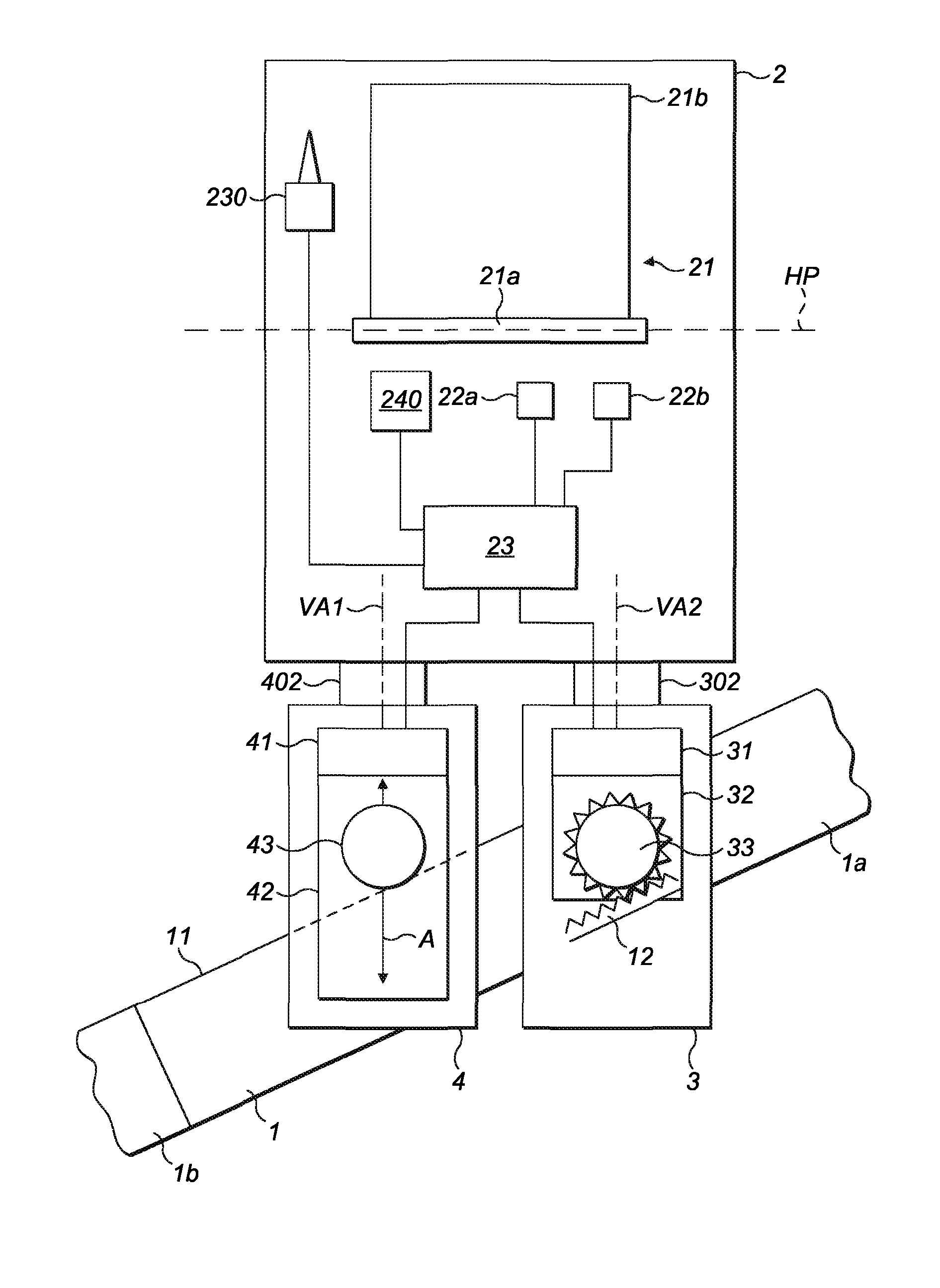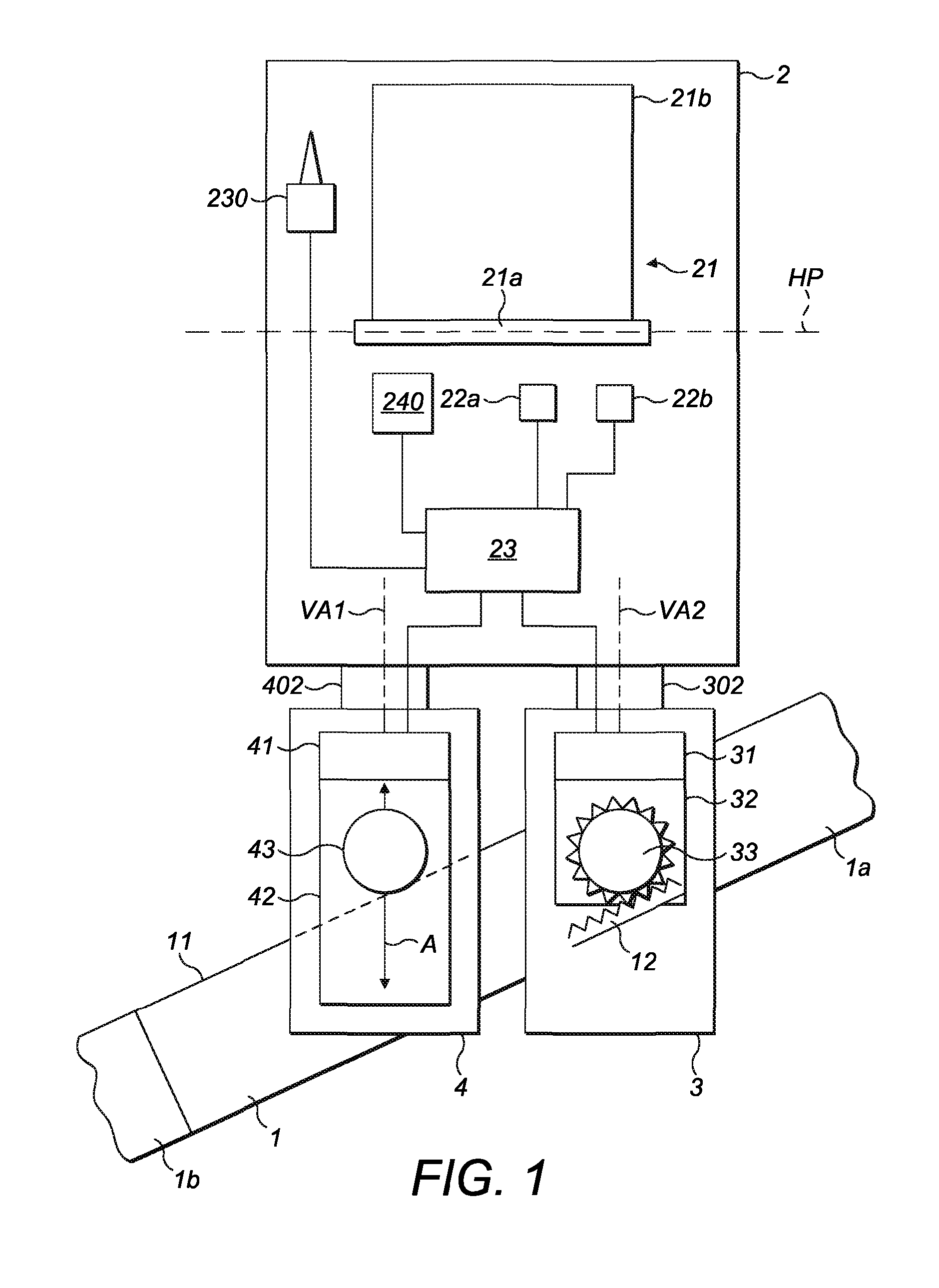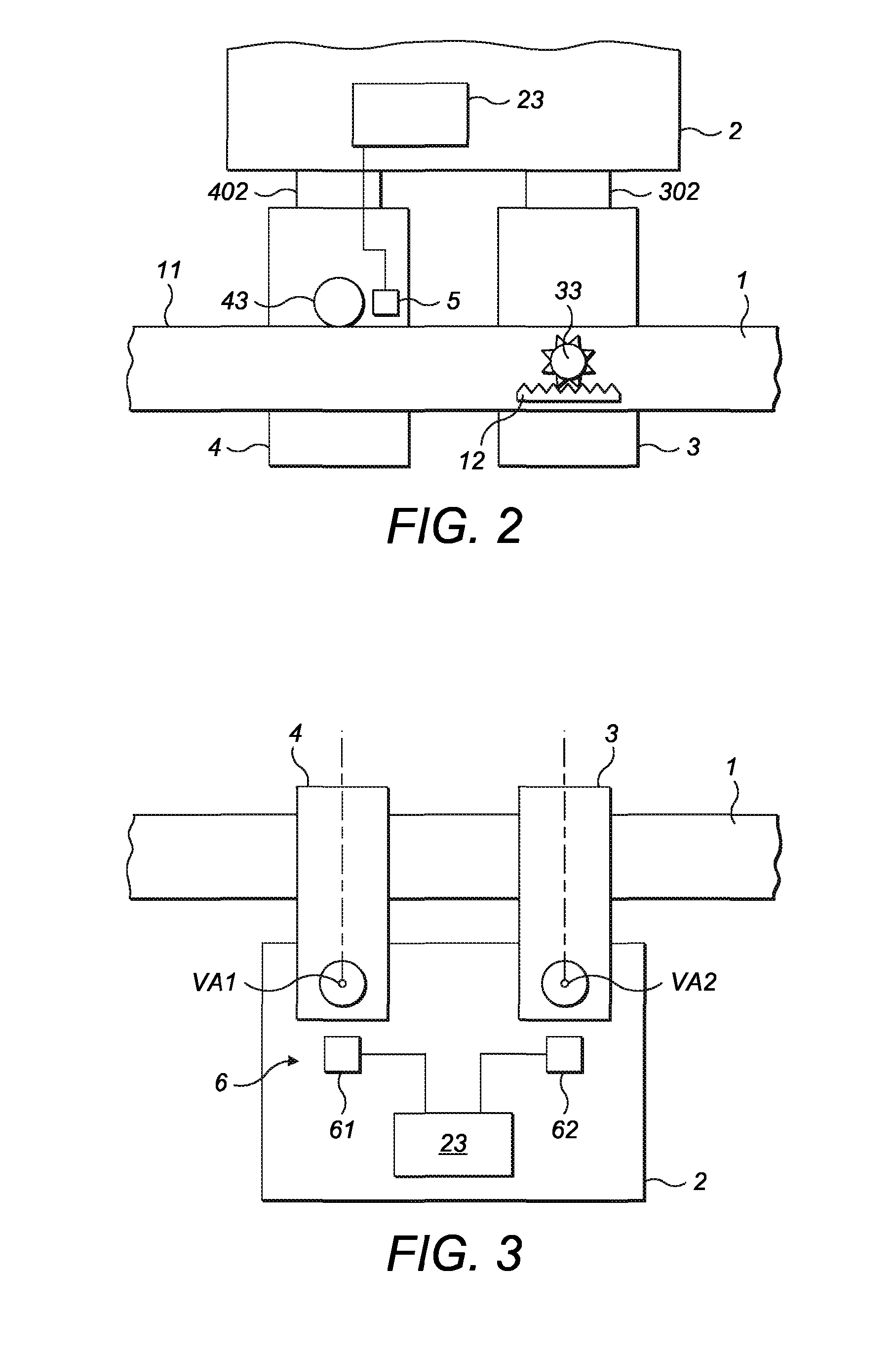Lift system
a technology of lift system and rail geometrie, applied in the direction of building lifts, transportation and packaging, etc., can solve the problems of time-consuming programming, more complex rail geometries, and inability to meet the needs of conveying people along one section of track,
- Summary
- Abstract
- Description
- Claims
- Application Information
AI Technical Summary
Benefits of technology
Problems solved by technology
Method used
Image
Examples
Embodiment Construction
[0109]Referring now to FIG. 1, this is a schematic representation of part of a stairlift system embodying the invention. The system comprises a rail (1) which is sectional, and part of two of those sections 1a and 1b are shown in the figure. The system also comprises a carriage assembly (2) comprising a seat (21) which itself comprises a seat base (21a) and a seat back (21b). In use, a person sits on the seat base (21a) and has their back supported by the seat back (21b) as the carriage assembly (2) is controlled to move up or down rail (1). The carriage assembly (2), which may also be described as a carriage, also comprises a first accelerometer (22a) and a second accelerometer (22b), each arranged to provide a respective output signal indicative of an inclination of the seat or platform with respect to a horizontal plane, HP. In the figure the seat base (21a) is substantially horizontal, such that the inclination of the seat base to the plane HP is substantially zero. The two acce...
PUM
 Login to View More
Login to View More Abstract
Description
Claims
Application Information
 Login to View More
Login to View More - R&D
- Intellectual Property
- Life Sciences
- Materials
- Tech Scout
- Unparalleled Data Quality
- Higher Quality Content
- 60% Fewer Hallucinations
Browse by: Latest US Patents, China's latest patents, Technical Efficacy Thesaurus, Application Domain, Technology Topic, Popular Technical Reports.
© 2025 PatSnap. All rights reserved.Legal|Privacy policy|Modern Slavery Act Transparency Statement|Sitemap|About US| Contact US: help@patsnap.com



